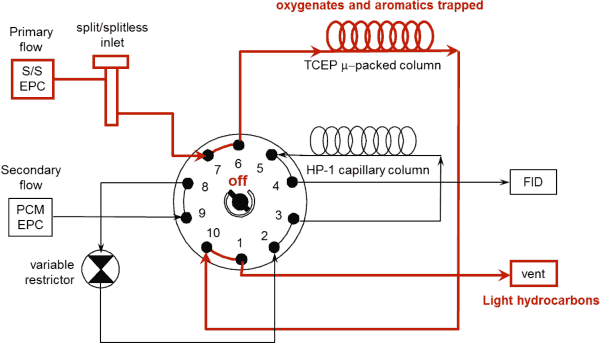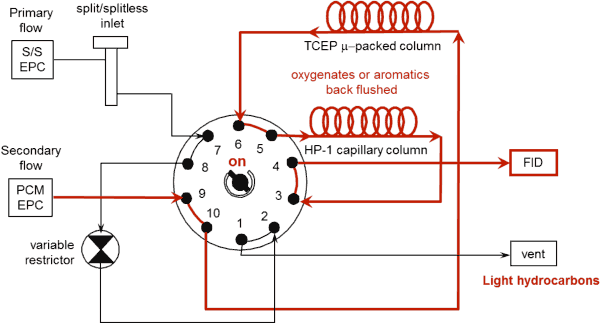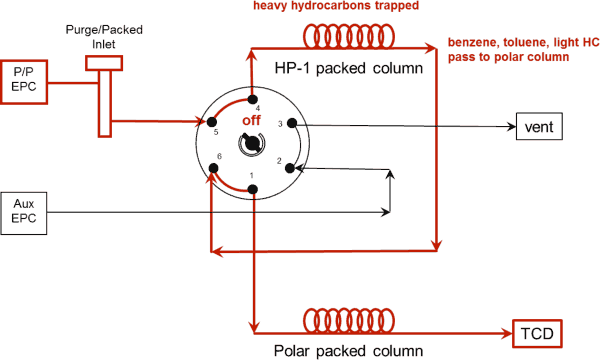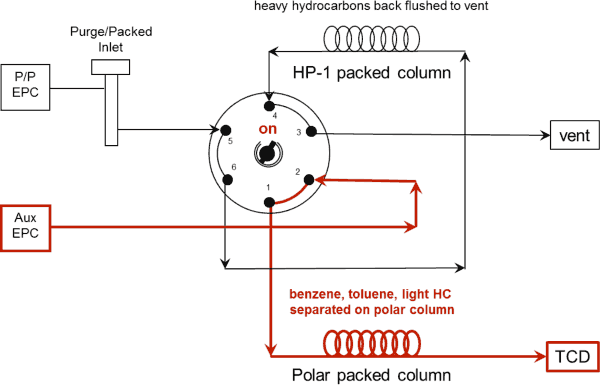Access Agilent eNewsletter, January 2014
>> Update My Profile | Subscribe to Access Agilent | Article Directory
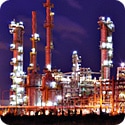
Large Valve Oven GC system meets the petrochemical industry’s growing demands
By Eric Phillips
Agilent GC Marketing Manager
Jason Ashe
Agilent GC Product Manager
Year over year, demand in production of fossil fuels is increasing. This growing energy demand has encouraged advanced new drilling techniques that are able to extract more raw materials from the ground, making extraction and refining fiscally feasible in more areas of the world. During the refinery process, quality and product uniformity must be continually tested through a series of standardized methods. These methods require gas sampling valve ovens for the analysis and for meeting ASTM or European Standard (EN) petrochemical requirements.
As demand for production accelerates, the need for ever more productive analysis also grows. The accessibility, capacity and thermal uniformity – the critical aspects of any external valve oven used in petrochemical analysis – becomes even more important. When an analytical determination supports a plant or refinery process, it is critical that routine maintenance of actuators and valves can be done quickly and easily. With a clear trend in the industry towards combining multiple analytical methods onto a single GC platform, capacity for multiple valves and columns becomes crucial. As oven capacity grows, it is important to design for thermal uniformity to assure a homogeneous isothermal environment and the absence of cold spots, which can trap sample and contaminants, otherwise degrading chromatographic performance.
Get the capacity, flexibility, and thermal uniformity you need
The Agilent Large Valve Oven (LVO) for Agilent’s 7890B GC is a versatile high capacity external oven, designed to meet the growing demands of the petrochemical industry. Agilent LVO can be configured to support complex, multi-valve GC applications. It provides a 3-sided ready access (top, front and back) to all internal valves and components. It also ensures thermal uniformity thanks to valve actuators that are enclosed within the LVO. These valve actuators make it easy to adjust the valves without removing the actuator. As a result, routine maintenance is quick and easy. Best of all, the thermal environment is never disturbed, so getting back online and running is a snap.
When petrochemical analyses are performed in large laboratory facilities, where a large number of systems are available, flexibility is not normally needed. Systems can be designated to run a single application, while other systems are available for back-up in emergencies. In smaller facilities, however, flexibility is important. That is why the Large Valve Oven (LVO) / 7890B GC configuration allows for an autosampler tower to be installed, so the system can also be used as a standard GC system. Plus, there are heated zones available for additional inlets and detectors for more flexibility. For even greater flexibility, the LVO / 7890B GC configuration allows you to configure multiple heated zones, so that you can also run isothermal in the valve oven and ramped temperature in the GC oven.
Preconfigured analyzers – chromatographic performance guaranteed
The Agilent LVO is available in several different configurations. As an analyzer, it is preconfigured to run a specific method – with the system built, configured, and tested to the method specified. Three pre-configured analyzers are available: a fast refinery gas analysis (RGA) with micropacked columns to save analysis time and increase throughput; a standard RGA with 1/8” columns to meet common method requirements; and a 3-in-1 ASTM method that includes D5580, D4815 (Figure 1A and 1B), and D3606 (Figure 2A and 2B) in a single analysis. The chromatographic performance of each preconfigured analyzer is guaranteed.
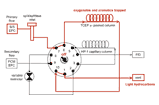 Enlarge
Enlarge
Figure 1A. Valve setting for sample injection of methods D4815 and D5580 in LVO.
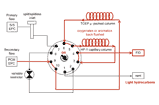 Enlarge
Enlarge
Figure 1B. Valve setting for sample analysis of methods D4815 and D5580 in LVO.
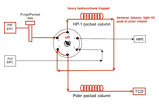 Enlarge
Enlarge
Figure 2A. Valve setting for sample injection for method D3606 in LVO.
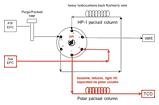 Enlarge
Enlarge
Figure 2B. Valve setting for sample analysis for method D3606 in LVO.
Designed to save you money
There are a lot of good economic and technical reasons to consider upgrading older equipment in the lab. Better performance to meet more stringent regulations; more efficient gas utilization to address supply/price challenges of helium; and cost savings and strategic capabilities available with the advanced features of the Agilent LVO / 7890B GC system – which were not available with previous generation systems. For example, a new 7890B LVO system can be operated with hydrogen, a much less expensive carrier gas. It can also be fitted with an integrated H2-sensor that can detect hydrogen at levels well below its combustible limit, and safely shut down a GC unit should the need arise. Agilent 7890B GC sleep/wake modes manage operation and standby states to minimize resource utilization and costs, while optimizing sample throughput.
The features you need today to meet the demands of the future
Demand for fossil fuels and petrochemical products will only continue to increase in the foreseeable future. That’s why the Agilent Large Valve Oven / 7890B GC system has been designed for flexibility, capacity, and accessibility. Its size and valve configuration possibilities offer the flexibility to combine methods, ensuring that answers to critical production questions are answered quickly. The number of valve and mandrel positions available allows the system to be configured as needed for a specific analysis. And the LVO system provides easy accessibility, thus ensuring quicker maintenance with less down time. In addition, available analyzer configurations with guaranteed chromatographic performance ensure that these pre-configured systems are quickly implemented at the laboratory – providing critical results during production for maximum productivity.
The Agilent Large Valve Oven / 7890B GC system is sure to meet the demands of your operation today, and for years to come. Learn more about it now, and then put it to work in your lab.
>> Update My Profile | Subscribe to Access Agilent | Article Directory
